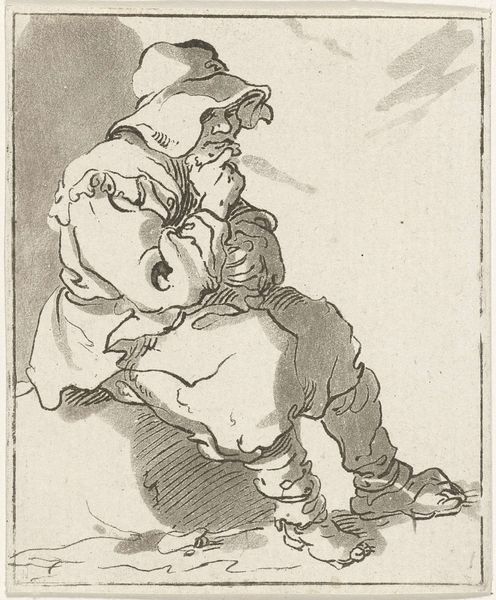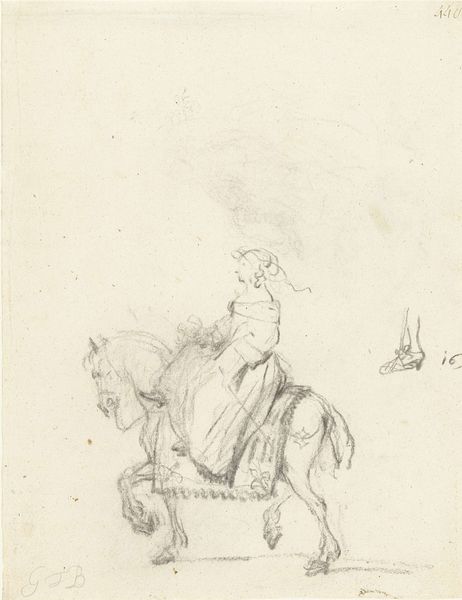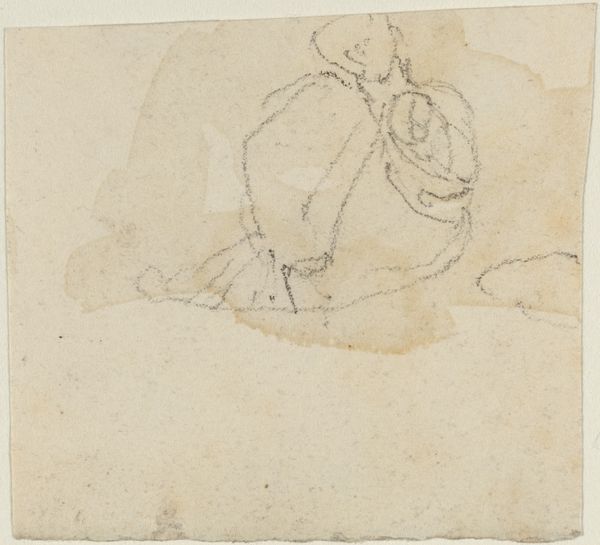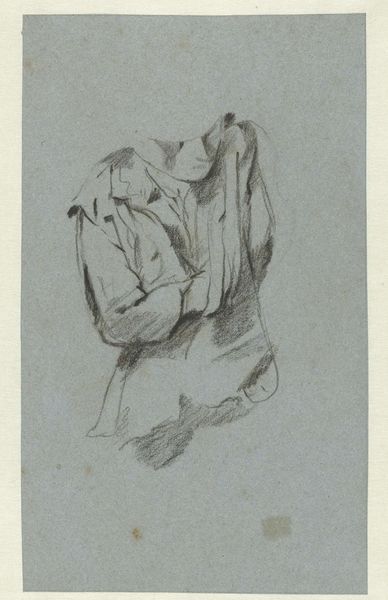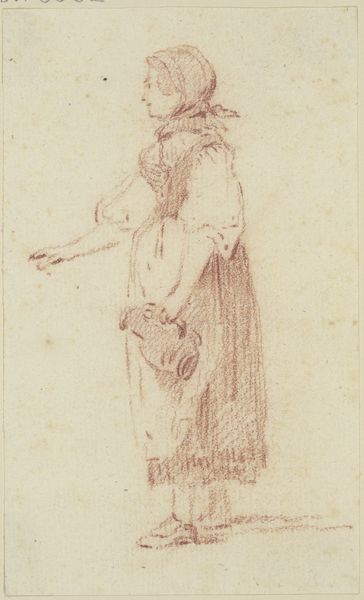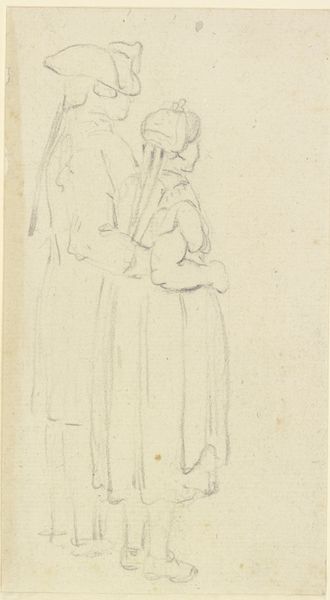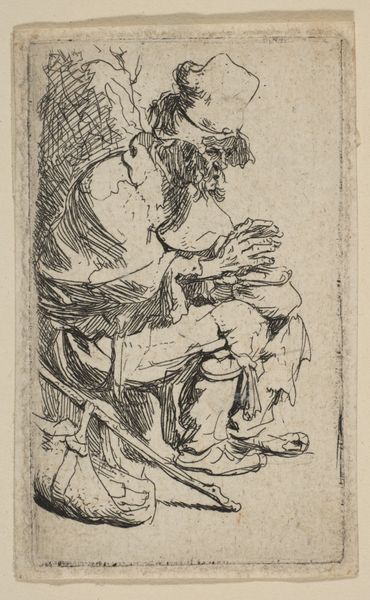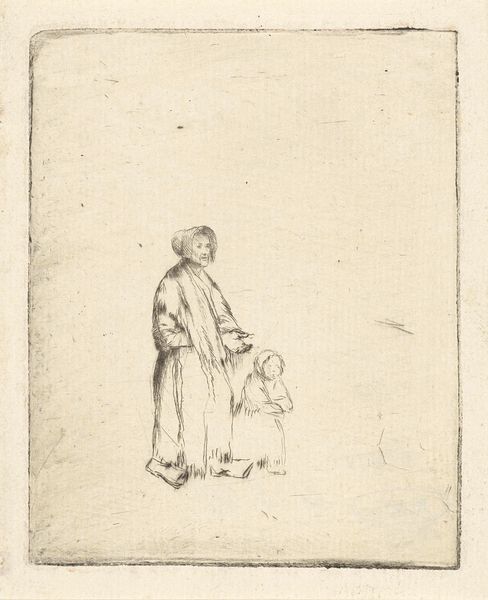
drawing, pencil
#
drawing
#
comic strip sketch
#
imaginative character sketch
#
toned paper
#
light pencil work
#
pencil sketch
#
figuration
#
personal sketchbook
#
sketchwork
#
romanticism
#
pencil
#
sketchbook drawing
#
genre-painting
#
storyboard and sketchbook work
#
sketchbook art
Dimensions: height 101 mm, width 82 mm
Copyright: Rijks Museum: Open Domain
Curator: I’m immediately drawn to the subtle details and understated emotion in Hermanus Fock’s pencil drawing, “Man zittend op steen,” created sometime between 1781 and 1822. Editor: It's interesting...The initial feeling is melancholy, isn’t it? The soft pencil work and muted tones enhance the somber mood. The figure seems almost lost in thought or perhaps resignation. I want to get closer to study the method of the paper creation. Curator: Indeed, the sketch elicits introspection. Beyond the feeling, the very pose and garb could suggest particular cultural roles or even archetypes present during this time. Think of similar depictions found in Dutch Golden Age paintings, or perhaps even popular theatre figures of the era. Is this perhaps a nod to a historical figure filtered through Fock's interpretation? Editor: I agree. And knowing this was rendered in pencil offers its own important material reading: pencil's accessibility points to a potential democratization of image-making, shifting away from more costly paints and extensive studio preparation. Fock captures this contemplative moment, the character's downcast gaze is achieved by soft shading and deft strokes. What was available informed what was drawn, how it was drawn, and whom it would reach. Curator: A crucial point, regarding material availability shaping content. To dig deeper, what might the symbol of the stone suggest? Consider the historical context of landscape art... or the potential religious connotations of stone as foundational, durable, or even a place of refuge. Editor: Yes, even the absence of a clear ground plane concentrates attention on the figure. Was this figure truly “homeless?" Pencil sketches during this time helped form how working class communities presented their hardships. Looking carefully we see thin hatching builds the form of the figure; the lines describe volume while the paper breathes beneath. It’s also tempting to view these strokes as evidence of an artisan finding form for the underclass of that society through his touch. Curator: The weight of human emotion through a simple figure and the accessibility of its method certainly provide many potential meanings. It emphasizes both an outward realism, and an inward subjectivity. Editor: The materials employed speak not just to the making of this artwork but also echo and connect the social circumstances that have allowed its creation to enter within public spaces today.
Comments
No comments
Be the first to comment and join the conversation on the ultimate creative platform.
